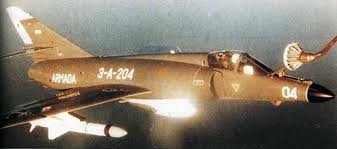
April calls to mind some historic events of diverse nature, which have intertwined Cuba and the United States of American since their beginnings. It was in that month, but in 1528, that Don Panfilo de Narvaez saild from the big island with 300 men with the intention of conquering and colonizing Florida. And on April 20, 1898, president William McKinley approved a proposal by the U.S. Congress which demanded the Spanish withdrawal from Cuba. It was in April that the Bay of Pigs was invaded in 1961, and they say that it was in this month, the following year, the Prime Minister of the former USSR, Union of Soviet Socialist Republics, Nikita Khrushchev, came the unfortunate idea of placing nuclear missiles in Cuba.
In October of this year we will mark the fiftieth anniversary of what was called the Crisis in the Caribbean, and of course the Cuban government press published excerpts from a book titled “October 1962: The Biggest Crisis of the Nuclear Age,” written by an official retired from the Cuban missile troops. Although during the last five decades some declassified information from the countries involved in these events, there have been some meetings between the participants, and a great deal has been written on the theme, controversy remains among the opinions and arguments surrounding these actions that, for the first time, brought the human species to the brink of extinction.
“Add” was the name by which the Soviets baptized the secret military operation to bring fifty thousand soldiers and officers to Cuba, to place launchers for forty medium- and intermediate-range nuclear missiles, capable of dealing a devastating nuclear blow to the United States and Canada. With these troops also came tactical nuclear arms to be used for defense if the strategy of deterrence failed. They feared that the tactical-technical data of the final nuclear capacity would reach the Coviet Troop Groups: 80 nuclear charges between 5 and 12 kilotons (between 0.4 and 0.9 times that of Hiroshima); 12 of 3 kilotons (0.23 times that of Hiroshima); 24 of 1 megatons (77 times that of Hiroshima); 16 of 1.65 megatons (127 times that exploded over Hiroshima).
As the power to use the whole nuclear arsenal was in the hands of top Soviet leaders, many of us have wondered what would have happened in response to a landing of U.S. troops or a confrontation in the area of the Guantanamo naval base in relation to tactical nuclear weapons. Would they have launched the Soviet tactical nuclear weapons on Guantanamo? And the Cuban civilian population? Would they have been used on the beachheads on our shores? Would the U.S. bases in the Panama Canal, Vieques in Puerto Rico and others on the periphery of Caribbean received the Soviet arms? And the civilian populations of those brother territories?
Because it the imprudent challenge of that October was resolved peacefully today we are we questioning this and more.
Now it doesn’t seem important to clarify of the October Missile Crisis of 1962 was the cause of consequence of the Bay of Pigs invasion, but rather how to create the most favorable scenarios for the Cuban people to progress in the recovery of their rights and freedoms. To achieve these ends, in our opinion, it is vital to negotiate a solution to the conflict between the governments of the United States and Cuba.
Today the former Soviet troops are have different names: Russian, Ukrainian, Belarusian, etc. The Lourdes listening base in Cuba no longer exists and the Cold War ended peacefully, with the free reshaping of Eastern Europe. Let us hope, then, that peace will have another chance in our Caribbean environment, even though there are now more than fifty years of disagreements between Cuba and our near northern neighbors.
As for the different histories of the Caribbean crisis, hopefully life and the authoritarian Cuban authorities allow us to return with more comments.
8 May 2012
